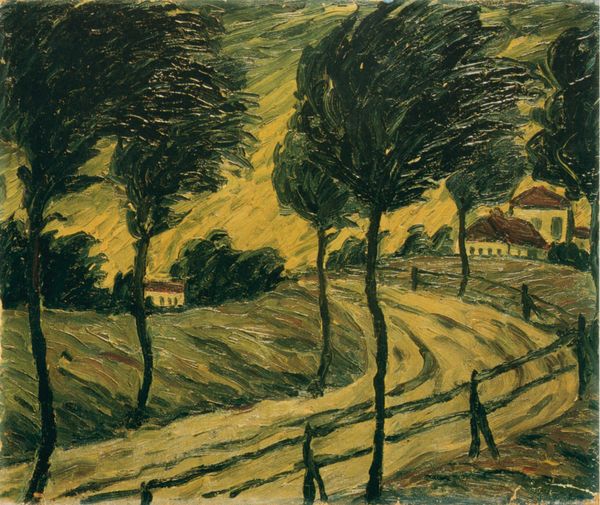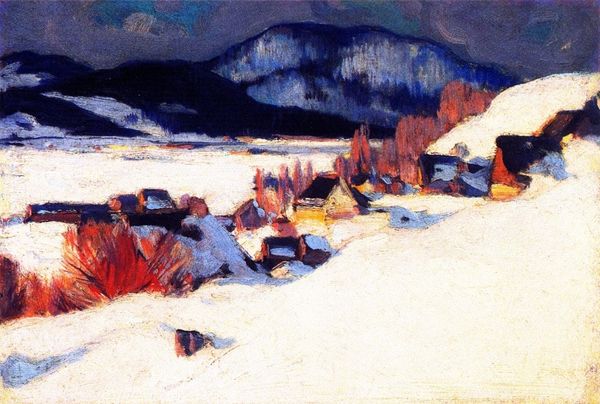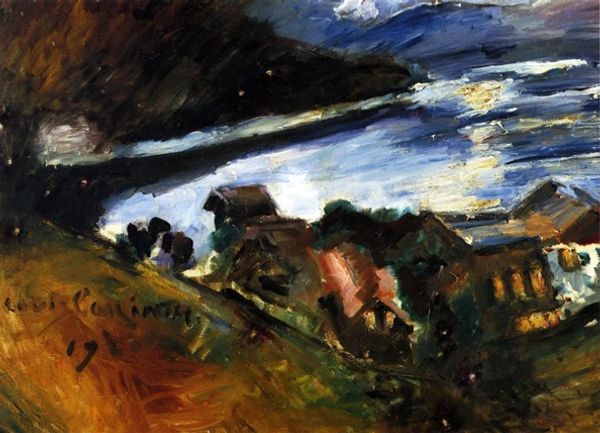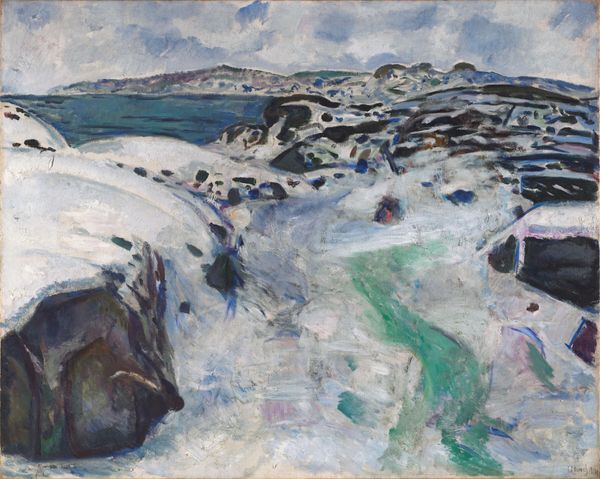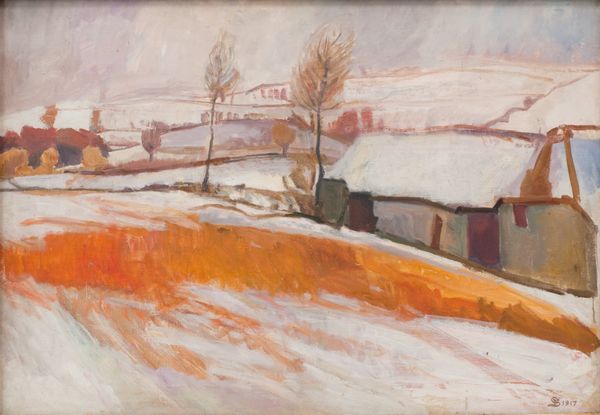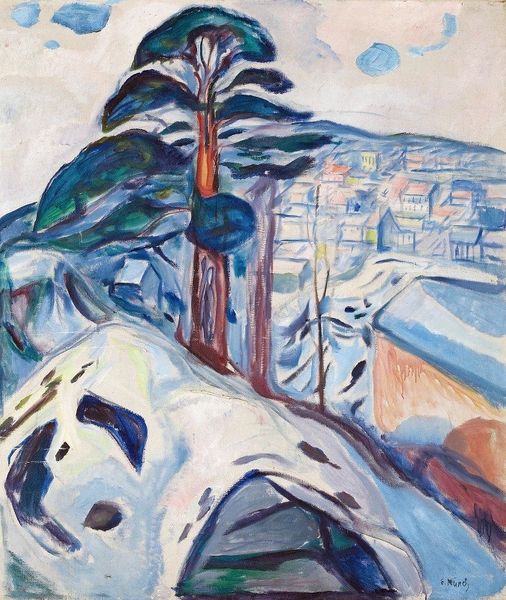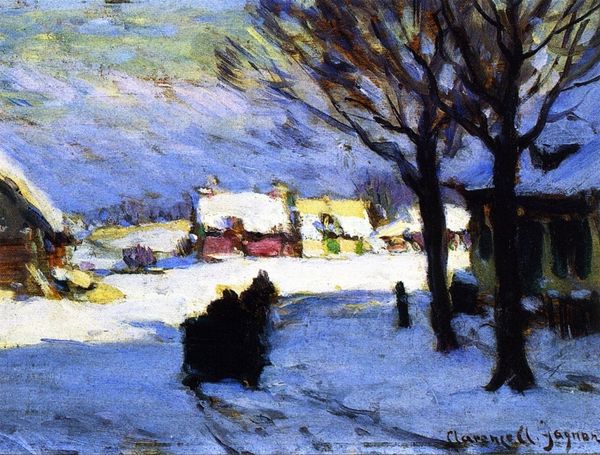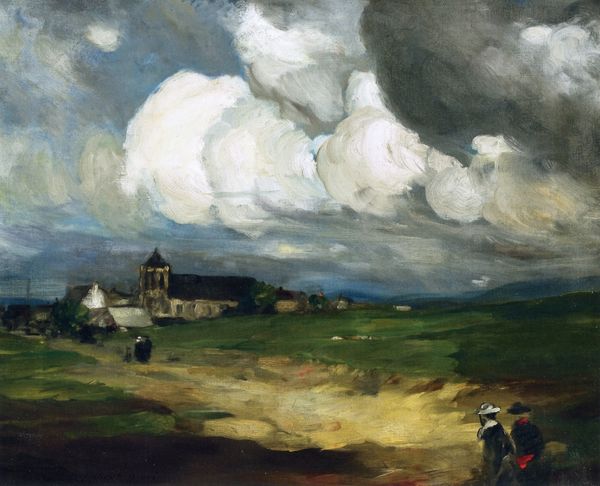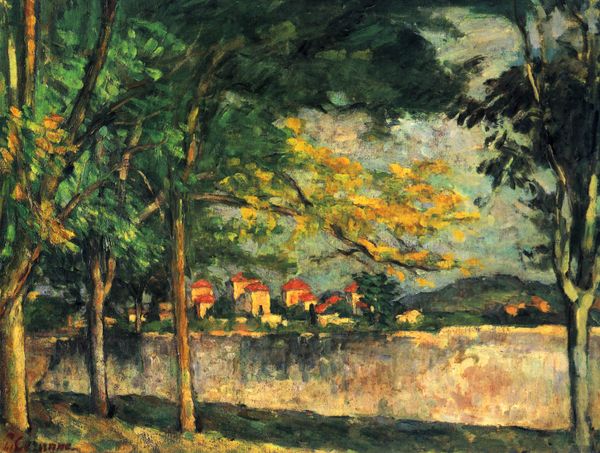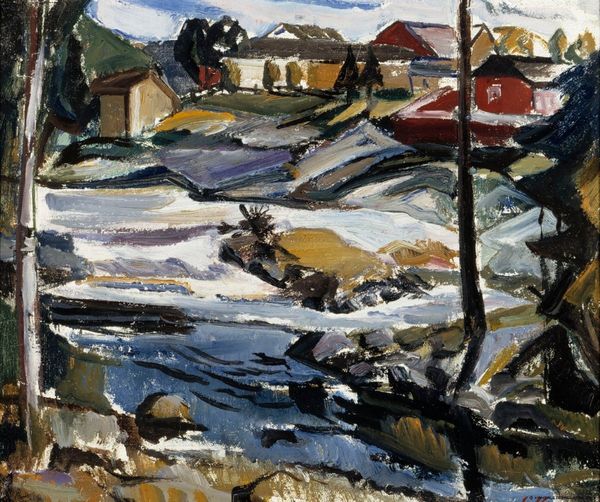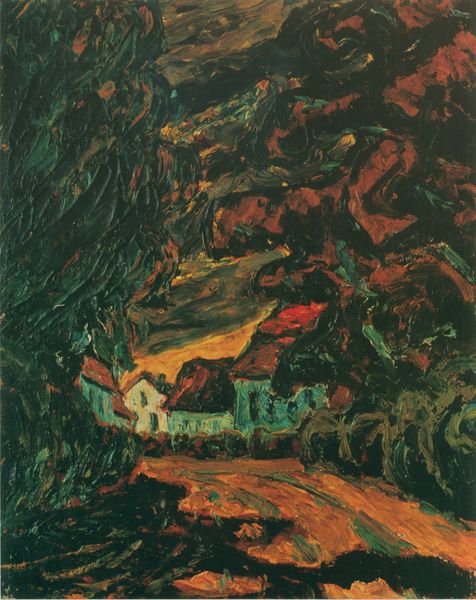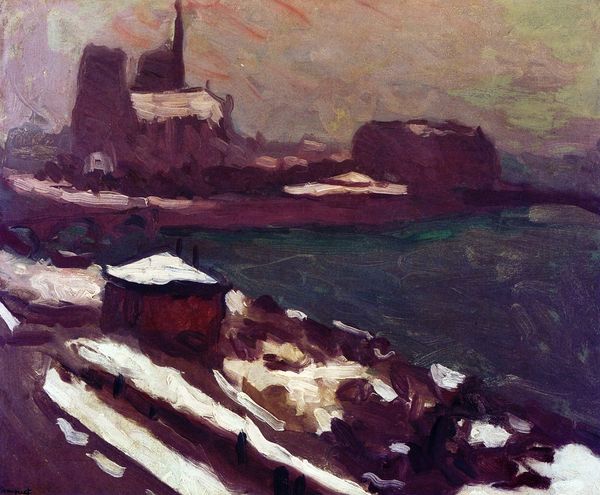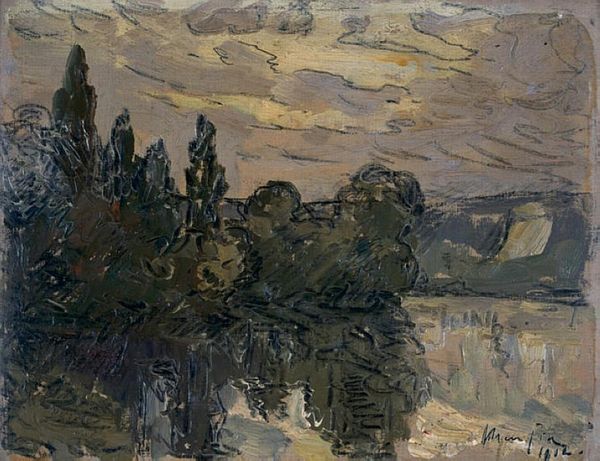
Dimensions: 73 x 92 cm
Copyright: Public domain
Editor: This is "L'Estaque under Snow," painted by Paul Cézanne in 1870 using oil on canvas. I find the scene unexpectedly stark, almost barren. What strikes me is the weight of the dark sky pressing down on the landscape. What do you see in this piece? Curator: I see a profound intersection of natural and man-made symbols, interwoven with cultural memory. The heavy sky you noticed? Consider the weight of the Franco-Prussian War, happening around the time this was painted. It looms, doesn't it, like a psychological shadow over the small village. Editor: That's an interesting point; the tension feels very palpable! Curator: Precisely. Now, observe the way Cézanne renders the snow. It’s not just white; there are yellows, grays, even hints of pink. Think about how snow, a symbol of purity and stillness, is here transformed. Could it represent the disruption of normal life, a kind of unsettling transformation imposed by external forces? Editor: It does seem less idyllic than other snow scenes I’ve seen. More…stark, like I said initially. Curator: The houses themselves become symbolic, too. Their placement, nestled somewhat precariously on the hillside. They suggest a community seeking shelter, enduring. Are they resilient? Vulnerable? The painting asks us to contemplate those questions, about continuity and change in the face of adversity. Editor: I hadn't considered the war's impact when looking at a landscape, but the more I look the more I agree with you! Curator: Art has that special function as cultural repository: we see this particular landscape differently because of a historical consideration. Editor: Exactly. I now feel that it is important to analyze an artist's work within its contemporary social context. Curator: It makes the visual all the more potent when considered together with its place in time.
Comments
No comments
Be the first to comment and join the conversation on the ultimate creative platform.
